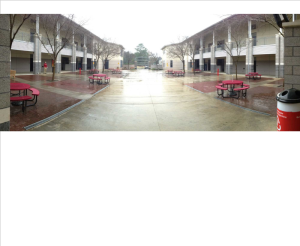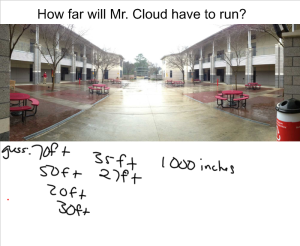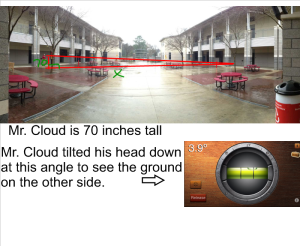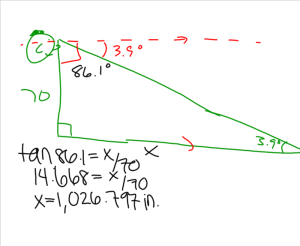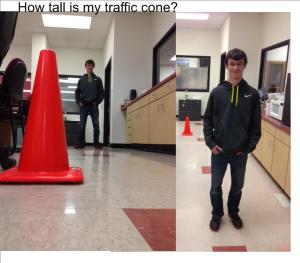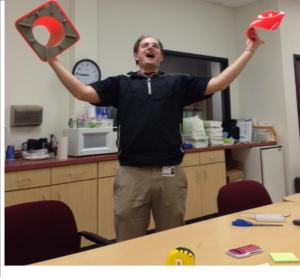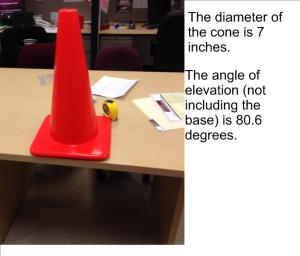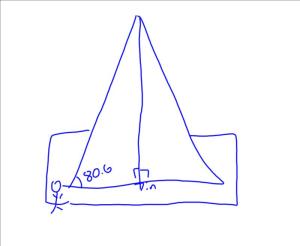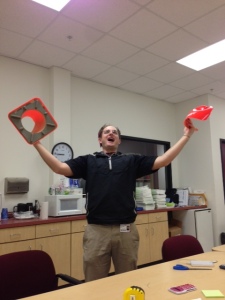I wanted to give my students a way to define an angle of depression for themselves. I found an interesting context involving finding a vertical distance given a horizontal distance and an angle of depression. I found it easier to switch which piece of information I gave them, but it’s practically the same idea.
The weather here today is pretty terrible. It’s been raining, is raining and is supposed to continue to rain. So I used that as the opener:
Then, I gave them the situation they were to work through:
Then came the question:
The students gave their guesses and we were off. A student pretty quickly gave the idea that a triangle would come in handy and two other students asked for my height and one of the angles (you’d think we’d been doing trig ratios in class all week).
Getting the students to figure out what the angle I gave them represented in the picture was harder than I anticipated. I had a student tell me it was the angle from the other side of the courtyard to my eye line was the angle (which is equivalent) but couldn’t tell me why.
Once we figured out what the angle was on the picture, we ended up here:
Overall, we came to the definition I wanted and each group did well in working the problem out, but this problem too quickly turned into an exercise with pretty pictures rather than a great discussion about angles of depression. I’ll have to tweak this one next time.

